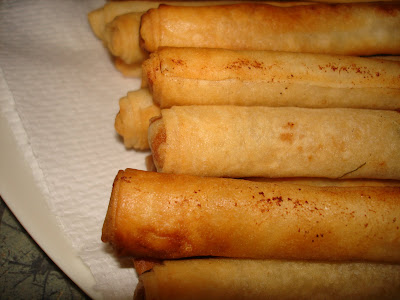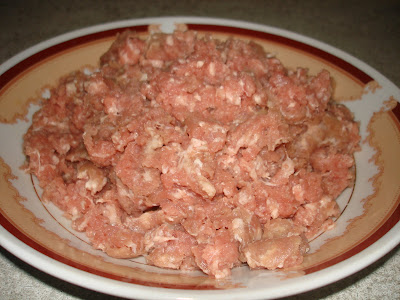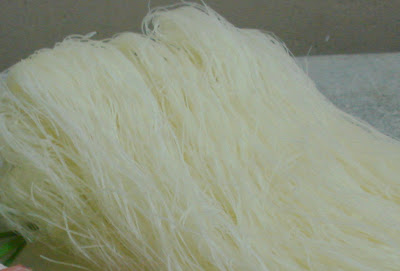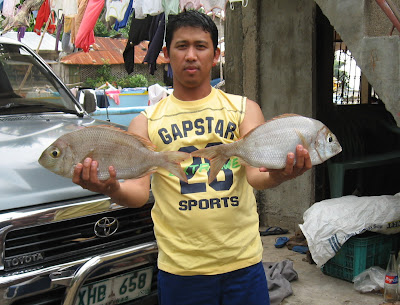
Every time I will munch on “lumpiang shanghai”, flashes of happy memory will appear on my mind. The scene was a traditional family occasion where everybody is busy cooking and preparing foods. I am still a first grader and happily playing around when I ran through the kitchen area. It is there where I chanced upon this funny looking “lumpia” just slightly bigger than my fingers but unusually longer. Instinct drove me to secretly take one, run and hide. In the hidden corner of the house the inevitable happened:
a love at first bite.
Since that day “lumpiang shanghai” has been dearly loved by me. I eat it as viand accompanying steamed rice for meal, “merienda” (snack) that goes well with
“pancit” (a top Filipino noodle dish), spaghetti and other pasta dishes, “pulutan” (appetizer) over alcoholic beverages and even on its own over a glass of sparkling soda drink.
.JPG)
“Lumpiang shanghai” is a type of “lumpia” or Filipino pastries similar to spring rolls. The recipe was brought by the Chinese immigrants and became popular where they settled in the Philippines. It has such enduring popularity that one can see at least one variant in almost any set of Filipino festivities. Its distinct taste and ease of preparation has caused it to be one of the favorite foods of the Filipinos.
For this recipe, the fillings will compose of 1 kl ground pork, 1 medium onion, minced, 1 large carrot, minced, 2 stalks celery, finely chopped, 2 tbsp soy sauce, 1 tsp sesame oil (optional), 1 large egg or 2 small eggs, lightly beaten, 1 tsp salt, 1 tsp ground pepper, 50 pcs spring roll wrappers and about 1 cup vegetable oil.
.JPG)
.JPG)
The process is pretty simple. You just have to thoroughly combine all the ingredients (except wrappers and vegetable oil) in a large mixing bowl. Continue blending until the mixture is held together by the beaten eggs. Taste the mixture and add some more salt or pepper if necessary.
















